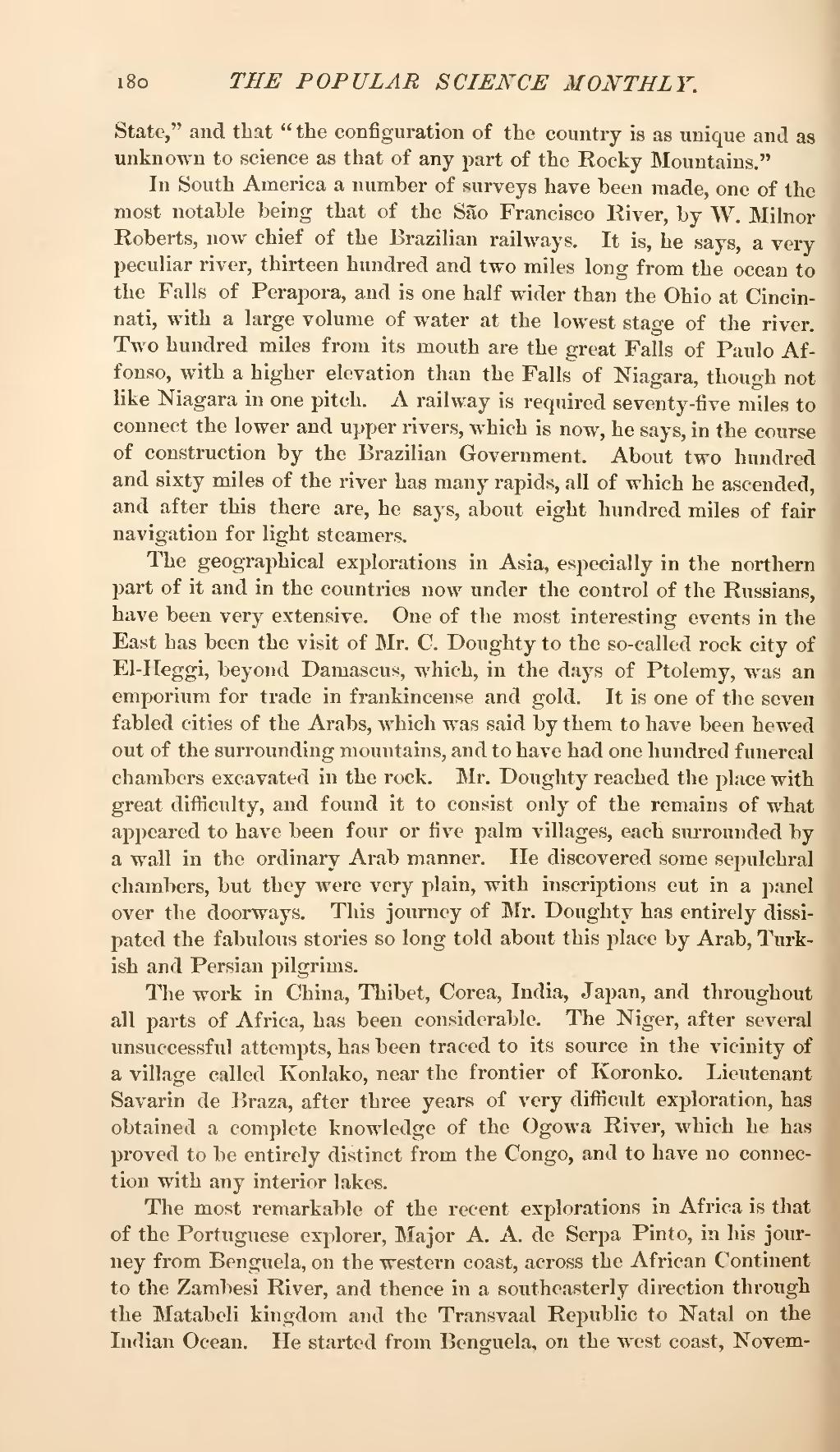State," and that "the configuration of the country is as unique and as unknown to science as that of any part of the Rocky Mountains."
In South America a number of surveys have been made, one of the most notable being that of the São Francisco River, by W. Milnor Roberts, now chief of the Brazilian railways. It is, he says, a very peculiar river, thirteen hundred and two miles long from the ocean to the Falls of Perapora, and is one half wider than the Ohio at Cincinnati, with a large volume of water at the lowest stage of the river. Two hundred miles from its mouth are the great Falls of Paulo Affonso, with a higher elevation than the Falls of Niagara, though not like Niagara in one pitch. A railway is required seventy-five miles to connect the lower and upper rivers, which is now, he says, in the course of construction by the Brazilian Government. About two hundred and sixty miles of the river has many rapids, all of which he ascended, and after this there are, he says, about eight hundred miles of fair navigation for light steamers.
The geographical explorations in Asia, especially in the northern part of it and in the countries now under the control of the Russians, have been very extensive. One of the most interesting events in the East has been the visit of Mr. C. Doughty to the so-called rock city of El-Heggi, beyond Damascus, which, in the days of Ptolemy, was an emporium for trade in frankincense and gold. It is one of the seven fabled cities of the Arabs, which was said by them to have been hewed out of the surrounding mountains, and to have had one hundred funereal chambers excavated in the rock. Mr. Doughty reached the place with great difficulty, and found it to consist only of the remains of what appeared to have been four or five palm villages, each surrounded by a wall in the ordinary Arab manner. He discovered some sepulchral chambers, but they were very plain, with inscriptions cut in a panel over the doorways. This journey of Mr. Doughty has entirely dissipated the fabulous stories so long told about this place by Arab, Turkish and Persian pilgrims.
The work in China, Thibet, Corea, India, Japan, and throughout all parts of Africa, has been considerable. The Niger, after several unsuccessful attempts, has been traced to its source in the vicinity of a village called Konlako, near the frontier of Koronko. Lieutenant Savarin de Braza, after three years of very difficult exploration, has obtained a complete knowledge of the Ogowa River, which he has proved to be entirely distinct from the Congo, and to have no connection with any interior lakes.
The most remarkable of the recent explorations in Africa is that of the Portuguese explorer, Major A. A. de Serpa Pinto, in his journey from Benguela, on the western coast, across the African Continent to the Zambesi River, and thence in a southeasterly direction through the Matabeli kingdom and the Transvaal Republic to Natal on the Indian Ocean. He started from Benguela, on the west coast, Novem-

